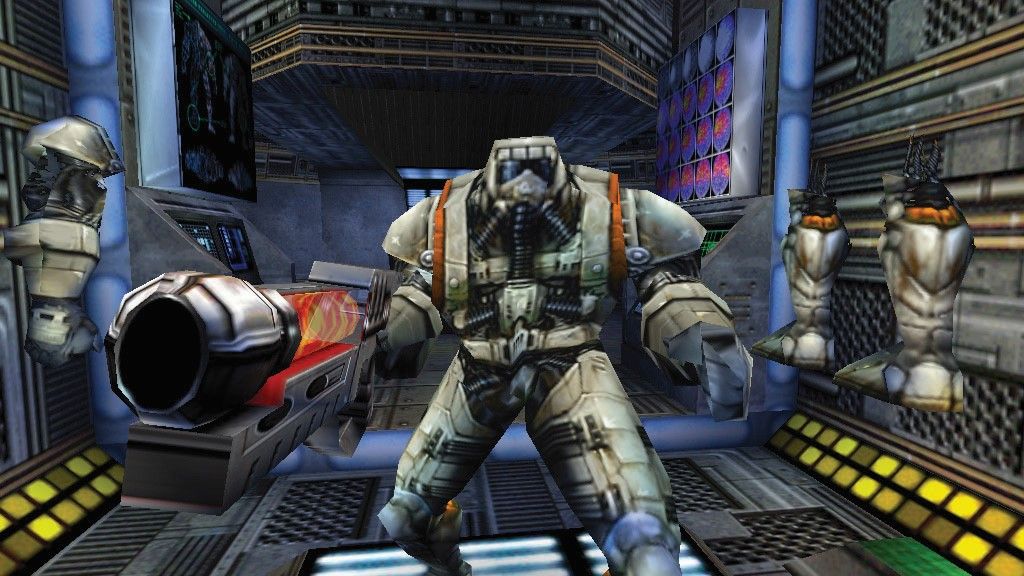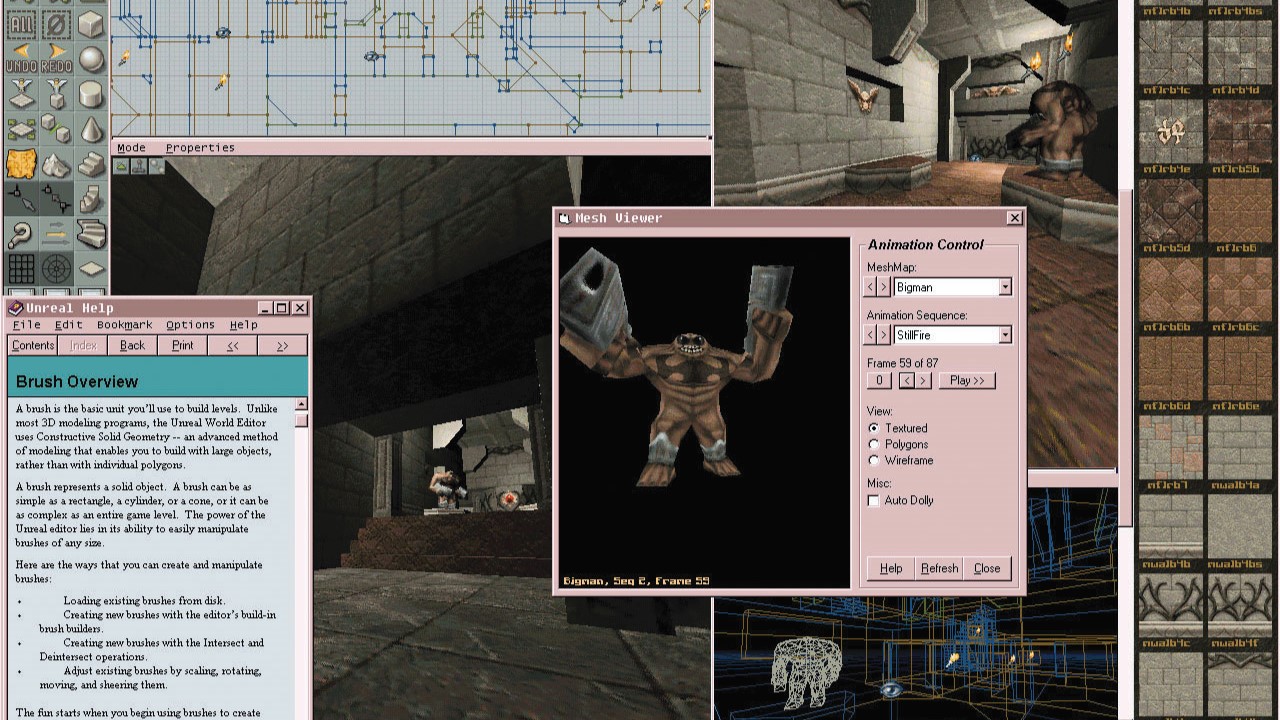Recruitment into game development is a many-tentacled thing in 2024. You might decide to study a degree in one of its specific disciplines, or enroll in the university of YouTube and have a crack at some amateur projects with a view to building up your portfolio. There are masterclasses with legendary industry figures. There are internships and game jams.
Tech Tales
This article first appeared in PC Gamer magazine issue 393 in February 2024, as part of our Tech Tales series. Every month we talk about the ups and downs of PC hardware, with a look back on our own history with the hobby.
In 1998, there was UnrealEd. Bundled in with Epic Megagames’ scandalously pretty first-person shooter were all the creation tools Cliff and the gang used to make the game. Just there on the disc. For free. For many of us at the time, that was an offer we couldn’t refuse.
And for those of us who were also 12 years old and idiots, UnrealEd proved an utterly baffling foray into a scary world we hadn’t previously considered. Spend an hour looking into that white box of a new project, trying to make wireframes, textures, anything appear, and you very gain an appreciation for the people who put games together.
It’s incredible to think that many of today’s experienced game developers started in this same place, because in ’98 there was absolutely no hand-holding. Indeed, after the first time I loaded Unreal Editor and tried to make sense of it was a catastrophe. I opened a new project, expecting to find an interactive tutorial and all manner of exciting tools to play with. Instead I found four empty panels. I clicked on one of them. Nothing happened. I clicked again. Nothing happened. An hour passed in similar fashion. I closed the program.
It was PC Gamer magazine that coaxed me back. A few months after Unreal came out it ran a step-by-step guide to making your first level in these hallowed pages, designed to be as buffoon-proof as possible. In the absence of an internet connection, that feature was my alpha and omega of information. If it wasn’t written down in the slightly dog-eared pages of that magazine, that was the end of the line. I’d either have to intuit a solution using my innate computing brilliance, or give up and go and eat a packet of Golden Wonder.
Thanks to that guide, I at least started to understand the panels and menus I was looking at. UnrealEd is arranged into several ‘viewports’—a 3D first-person view, a wireframe of the level from above, front and side. You click and drag the mouse to navigate around, then use the menus to populate your level with geometry, textures and actors. Twelve-year old Phil was captivated by the idea of using actors in a level editor, and subsequently less enthused to learn that ‘actors’ in Unreal Editor really means ‘objects of any kind’.
A simple project
The level that the guide was instructing me to build wouldn’t have given Warren Spector any sleepless nights. It was a corridor leading to a room with a light in it, a simple project that taught the basics so that we might go forth and use those basics to craft wondrous new experiences culling the Skaarj. Some young enthusiasts no doubt did exactly that, finding their place in the world as creators of virtual experiences. Most of us didn’t do that. We realised we were better at playing the games than making them, but even the most rudimentary attempt at making them had changed the way we looked at the medium. Permanently.
For the first time, we understood that games had a performance ceiling, imposed by the hardware of the time. There were limits to the geometry, the texture resolution and the number of actors, because we had limited hardware resources to spend on it all and we could see those resources depleting as we added more. Huh. So this game development stuff is actually about being smart and efficient, not just dreaming up cool gameplay passages.
The biggest revelation about it all was that I didn’t need any specialised hardware to make a game. Here was the creation kit that Epic had used to make Unreal, running on my Pentium 2 and Voodoo 2. The barrier for entry into game development was the exact same as the barrier for playing the game. Regardless of how we Unreal Editor inductees fared individually, we all internalised that much. Game development was right there at our fingertips, sometimes even bundled in with the games we bought. All we had to do was figure out how to build something worth playing.
Half-Life followed suit several months later in winter ’98, bundling the Worldcraft creation toolkit on the disc with the game. If anything it was even more impenetrable, but nonetheless it spawned a huge variety a mods. Important, industry-changing mods like Counter-Strike, Team Fortress Classic, and They Hunger.
So as most of us who bought Unreal and Half-Life at the time look back and consider those bundled toolkits irrelevant extras, we should remember that in fact, they were every bit as seismic as the games they shared a disc with.


